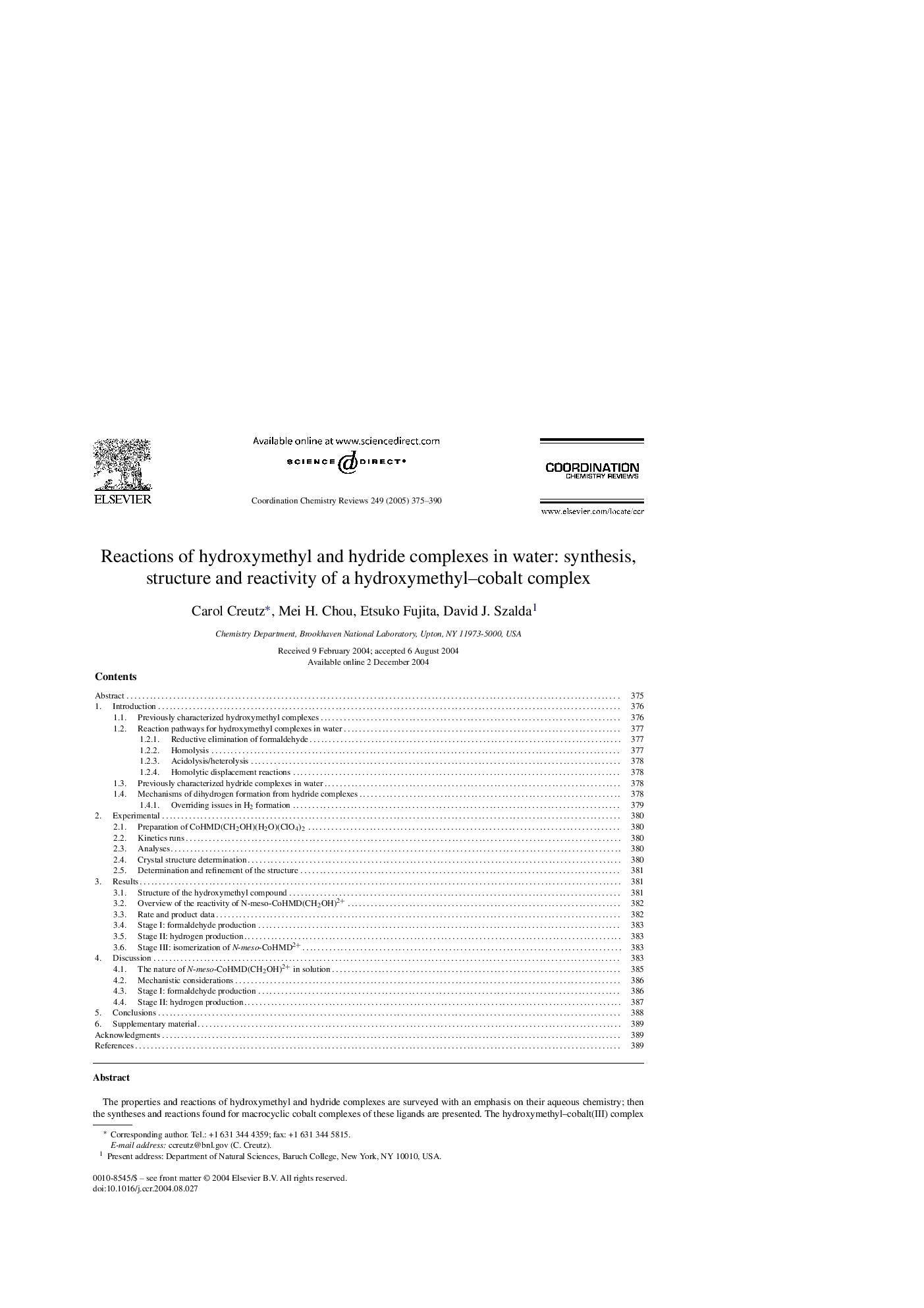| Article ID | Journal | Published Year | Pages | File Type |
|---|---|---|---|---|
| 9763758 | Coordination Chemistry Reviews | 2005 | 16 Pages |
Abstract
The properties and reactions of hydroxymethyl and hydride complexes are surveyed with an emphasis on their aqueous chemistry; then the syntheses and reactions found for macrocyclic cobalt complexes of these ligands are presented. The hydroxymethyl-cobalt(III) complex was prepared by addition of the photogenerated CH2OH radical to the cobalt(II) macrocycle N-meso-CoHMD2+ (HMD = 5,7,7,12,14,14-hexamethyl-1,4,8,11-tetraazacyclotetradeca-4,11-diene) in 0.1 M perchloric acid and characterized by an X-ray crystallographic study and spectroscopic characterization in solution. Acidic aqueous solutions are fairly stable and the complex decomposes, with formaldehyde elimination, by a base-catalyzed pathway. At 25 °C, formaldehyde elimination proceeds with the rate law âd[N-meso-CoHMD(CH2OH)2+]/dt = kI[N-meso-CoHMD(CH2OH)2+]/[H+], with kI = (3.5 ± 0.5) Ã 10â9 M sâ1 at pH 4-7 and 0.5 M ionic strength to yield the hydride complex, N-meso-CoHMD(H)2+ and CH2O. In a subsequent stage, N-meso-CoHMD2+ and H2 form with the rate law âd[N-meso-CoHMD(H)2+]/dt = (2 ± 1) Ã 10â7 [N-meso-CoHMD(H)2+]2/[H+] sâ1 at pH 4.5-8 and 0.5 M ionic strength. Ultimately, the N-meso complex isomerizes to yield N-rac-CoHMD2+ with previously observed kinetics.
Keywords
Related Topics
Physical Sciences and Engineering
Chemistry
Inorganic Chemistry
Authors
Carol Creutz, Mei H. Chou, Etsuko Fujita, David J. Szalda,
